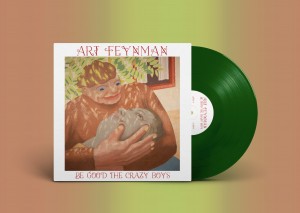
I spent over three years building Miracle Focus. In the midst of writing, I became a painter and spent two seasons acting on a television show (Mayans MC). The dichotomy of painting for days in my garage and then flying out to LA to play a villainous biker on TV was one of the most thrilling experiences of my life.
The idea of Miracle Focus was born out of one simple concept: to make people feel good. Throw in a healthy mix of Ram Dass, yoga, Freddie Mercury, Alice Coltrane, and Beastie Boys, plus over a year of writing and building the extremely dense architecture of the songs, and Miracle Focus was born. The result is FUN, wild, rhythmic music filled with synth layering and mantra-like lyrics intended to uplift and hopefully bring some light to whoever listens.
In many ways, this record is a love letter to bliss. Through meditation, I found a way to connect with something greater, a positive force that allowed me to write music as a manual towards a more love-focused life. And the miracles I refer to aren’t asking the universe for anything; it’s just acknowledging and celebrating this complex beautiful moment that we all get to share. It will be gone, it will re-emerge as something new, that will be gone, repeat....repeat... repeat…this eternal cycle. My most sincere hope is that whoever listens might through sonic osmosis experience a similar joy.
Sending peace and love. Thank you for your time. Tim.
TRACK LISTING
More You
Communication
Ananda
Future Temple
Party At Monster Lake
Switched On
Navigator
Ascend You
Fantasy Wranglers
Miracle Focus
